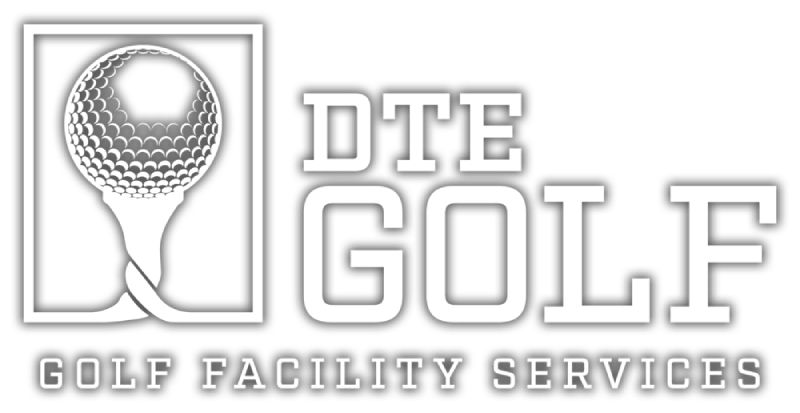Pest and Disease Control in Golf Course Management
Implementing preventive measures is crucial in golf course management to combat pests and diseases effectively. This involves strategies like regular aeration, optimized irrigation practices, disease-resistant grass varieties, and integrated pest management techniques to safeguard the course from fungal diseases, insect pests, and invasive weeds.
Golf courses are a sanctuary of green, meticulously manicured landscapes where avid golfers spend their leisure time. While the well-kept fairways and greens are a visual delight, they require meticulous care and management to stay in pristine condition. One of the most significant challenges that golf course superintendents face in Florida is managing and preventing pests and diseases that can wreak havoc on the turf.
In this blog, we will explore the vital aspects of pest and disease control in golf course management, and how partnering with DTE Golf® can be the key to maintaining a thriving golf course.
How Pests and Diseases Are a Silent Threat
The lush greens that grace a golf course are susceptible to a variety of pests and diseases. These unwelcome guests, if left unchecked, can rapidly turn paradise into a problem. Common issues include:
Fungal Diseases: Florida's humid climate is an ideal breeding ground for fungal diseases. Fungi like dollar spot, brown patch, and fairy ring can disfigure the grass and compromise its playability.
Insect Pests: Pests like nematodes, armyworms, and chinch bugs can chew through grass roots, causing extensive damage.
Weeds: Invasive weeds can destroy the pristine appearance of a golf course and disrupt the smooth roll of the ball.
Preventative Measures
Preventing pest and disease problems is much more effective than treating them after the fact. Here are some strategies for proactive management:
1. Cultural Practices:
Mowing: Regular, well-timed mowing at the correct height can help maintain healthy grass by removing excess growth and promoting a dense turf.
Irrigation: Proper watering practices, such as avoiding over-irrigation and watering in the early morning, can reduce the risk of disease development.
Aeration: Aerating the soil improves air and water penetration, reducing thatch buildup and promoting healthier roots.
2. Integrated Pest Management (IPM):
Biological Controls: Beneficial organisms like nematodes or parasitic wasps can be introduced to control harmful pests.
Physical Traps: Sticky traps, pheromone traps, and physical barriers can help in capturing or excluding pests.
Chemical Treatments: In cases where chemical interventions are necessary, selecting the least toxic and most targeted treatments is essential for minimizing environmental impact.
3. Regular Inspections:
Consistent and thorough monitoring of the course allows for early detection of pest and disease issues. This proactive approach enables timely intervention and reduces the severity of infestations.
4. Soil Testing:
Regular soil tests can provide essential information about the pH levels, nutrient content, and overall soil health. Adjusting fertilization and maintenance practices based on these results promotes optimal turf growth.
5. Selecting Resistant Grass Varieties:
Opting for grass types known for their disease resistance, such as certain strains of Bermuda or Zoysia grass, can decrease vulnerability to fungal infections.
Implementing these preventive measures as part of a holistic pest and disease management plan can significantly enhance the overall health and appearance of golf course greens. It not only preserves the aesthetic appeal of the course but also ensures that it remains a pleasurable and playable environment for golfers. By addressing issues proactively, golf course superintendents can maintain their course's reputation for excellence.
Why Partner with DTE Golf®
Managing these complex issues is a specialized task that requires knowledge, experience, and dedicated resources. DTE Golf ® is your trusted partner for comprehensive golf course management, including pest and disease control. Here's why you should consider our services:
Expertise: Our team comprises skilled professionals who understand the unique challenges of Florida's climate and terrain.
Proactive Approach: We employ IPM strategies, regular inspections, and tailored cultural practices to keep your course in top condition.
Responsible Pest Management: When chemical treatments are necessary, we employ them judiciously, focusing on eco-friendly and effective solutions.
Continuous Improvement: We stay up-to-date with the latest advancements in turf management to provide you with the best possible service.
The Path to Pristine Greens
Maintaining a golf course that boasts pristine greens and fairways is a labor of love. Effective pest and disease control is an integral part of achieving this goal. By partnering with DTE Golf®, you can ensure that your course remains a beautiful haven for golfers and a testament to your commitment to excellence.
Are you ready to elevate your golf course's quality and playability? Contact DTE Golf® today to explore our comprehensive golf course management services, including proactive pest and disease control. Your greens deserve the best – choose DTE Golf® for excellence in golf course management. Contact us now to discuss your course's specific needs and unlock its full potential.

